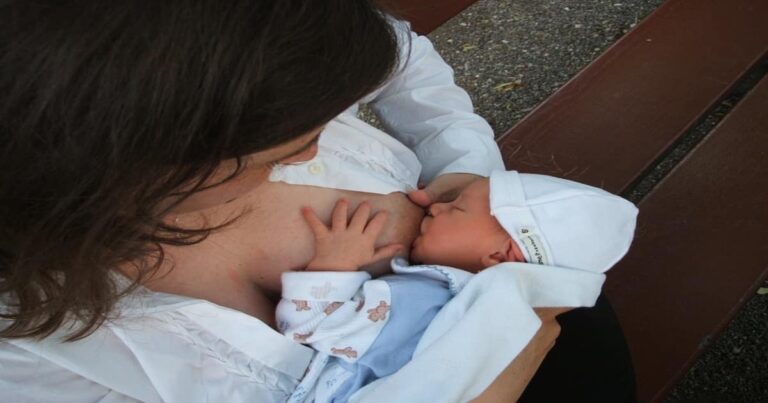Most Parents Are Making a Dangerous Mistake When Putting Their Babies to Sleep
Safe sleep practices are one of the most important ways to reduce the risk of SIDS. But a new study indicates that most of us aren’t consistent when it comes to how to put a baby to sleep.
Since 1994, the AAP has said the safest way for a baby to sleep is on its back. That’s when the Safe to Sleep campaign started. Doctors say a sleeping baby is safest in its own crib, with a firm mattress and no sheets, blankets, stuffed animals, or bumpers. Keeping the crib in the parents’ room for the first six months reduces the risk of SIDS by 50 percent.
In spite of the recommendation to put babies to sleep on their backs, a new study indicates many parents are not. The study, published in Pediatrics, interviewed 3297 mothers of babies between two and six months old from around the US. The survey says only 43.7 percent of surveyed mothers actually put their babies to sleep on their backs every time they put them to sleep. That means more than half of surveyed mothers don’t always put their babies to sleep on their backs.
77.3 percent of respondents said they typically put the babies to sleep on their backs, but not every time.
“What was new and hadn’t been explored before was this idea of what people intended to do versus what they actually do,” study co-author Dr. Eve Colson told CNN. “What we found was that people intended to put their baby on their back but didn’t always do that.”
Of course, any parent knows that intention and practice don’t always line up. Especially when non-sleeping newborns are involved. But how to put a baby to sleep is important. Every year, babies die from unsafe sleeping conditions.
Why are people not following the recommendations of how to put a baby to sleep?
Most of the surveyed mothers who put babies to sleep on their stomachs said they thought stomach-sleeping was more comfortable. Some even thought stomach-sleeping was safer.
Some parents were getting mixed or bad information, too. Often that came from friends or relatives. Safe to Sleep only started in the 90s. Our parents and grandparents almost certainly put us to sleep on our stomachs. At the time, people thought stomach sleeping was safer and more comfortable for babies. Many thought a baby on its back was more likely to choke, and a baby on its stomach would just drool on the mattress instead of aspirating saliva.
That means a lot of moms today still hear incorrect information about how to put a baby to sleep.
The study authors recommend pushing harder to make sure doctors clearly educate patients about sleep safety. It’s important to emphasize that safe sleep habits have to be observed every time. It’s also important to explain away common misconceptions, like that supine babies will choke in their sleep.
Did you always follow the back to sleep recommendations? Let us know in the comments.
Also read:
- UFC Fighter Who Recently Lost Son Blames Vaccines for His Death
- I Got Pregnant While Still Nursing and Everyone Knew I Was Pregnant Except Me
- This Baby Girl Was Born on the Day of the Eclipse, Guess What They Named Her
(H/T Cafe Mom, Image: iStockPhoto / romrodinka)






